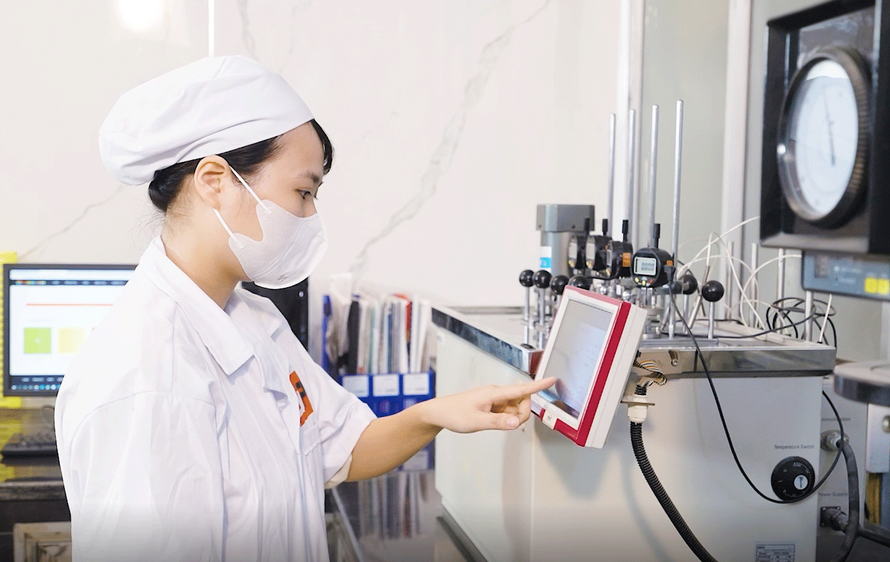Over thousands of years, plastics and polymers have become essential across all industries. Plastics offer versatility, durability and cost-effectiveness making them invaluable in a wide range of purposes. Apart from thermoplastic materials, which you can easily see in diverse practical applications, cold plastic has an important role in many areas. Why is cold plastic good for industries? Let’s deep into this article to discuss and have an understanding about cold plastics’ characteristics and uses.
1. Overview of plastic’s temperature ranges
Understanding these temperature ranges is crucial for selecting the appropriate plastic material for specific applications. Different types of plastic materials possess distinct chemical structures and mechanical properties, leading to varying temperature ranges. The following table demonstrates the temperature limits of some common types of plastics in the market:
| Type of plastics |
Temperature range
|
| Polyethelene (PE) |
-50°C to 80°C
|
Polypropylene (PP)
|
0°C to 120°C |
| Polyvinyl Chloride (PVC) |
-10°C to 60°C |
| Polystyrene (PS) |
-20°C to 70°C |
| Polyethelene Terephthalate (PET) |
-40°C to 70°C |
| Acrylonitrile Butadiene Styrene (ABS) |
-20°C to 80°C |
| Polycarbonate (PC) |
-135°C to 135°C |
Read more: Temperature ranges for different plastic materials
2. Why is cold plastic good for industries?

What makes cold plastic advantageous for industrial applications?
Similar to high temperatures, the cold can quickly change the properties of plastics. For example, the cold temperature makes a temporary loss of elasticity in polymers; thus they become "harder", yet more brittle, making them more likely to crack or break under the force of an impact. Due to this, cold plastic shows a number of characteristics that are different to thermoplastic plastic.
Unlike traditional thermoplastic plastics that require heat for application, cold plastic can be applied at any ambient temperature without the need for specialized heating equipment. Cold plastic finds diverse applications in many fields, especially road safety and infrastructure development. They are suitable for road markings and areas that need directions, for example stop streets, helical turns, parking lots, industrial zones, airports and runways or where ultra-durability markings are required.
Generally, the reasons why cold plastic is widely applied in many industries because of outstanding properties:
- Excellent adhesion of beads due to specially made coatings, suitable for concrete, asphalt and solvent-based paints, etc.
- Very good shape stability, especially at high temperatures.
- Good durability, guaranteed in 3 to 5 years.
- Excellent abrasion resistance, weathering resistant and slip resistance.
- No cracks due to methacrylate flexibility.
- Good resistance to engine oils and fuels.
- Visible at all times of day and night, in all lighting and weather conditions.
- Resistant to friction from traffic load.
- Low dirt pickup & retention.
- Easy to apply by hand or machine.
- Environmentally friendly due to being free of heavy materials.
- Available in a wide range of colors, such as white, black, yellow, red, blue, green, etc.
3. Conclusion
To sum up, cold plastic stands out as a versatile and highly effective material across various industries, particularly in applications requiring durable and reliable markings. There are many reasons why cold plastic is good for industries, for example excellent adhesion, shape stability, abrasion resistance, and low dirt pickup, its environmental benefits and wide range of color options, etc. Those properties make sure that it performs well in demanding conditions and maintains its functionality over time. As industries continue to seek solutions that offer both durability and ease to use, cold plastic remains a valuable choice, proving its worth through its numerous advantages and wide-ranging applications.
4. About EuroPlas

EuroPlas owns many advanced technology ensuring the highest-quality products to customers
EuroPlas is a reliable provider of high-quality plastic materials for your projects. We are proud of being a TOP 1 filler masterbatch manufacturer on the global market. Besides, we also supply diverse products for the plastic industry, such as plastic additives, bio plastic, color masterbatch, bio filler, engineering compound plastic, etc and become strategic partners of thousands of enterprises in more than 95 countries worldwide.
We always have the criterion of providing customers with the most optimal material solutions in both quality and price. Moreover, our solutions meet the diverse needs of the world's industries, not only in terms of high standards and reliability, competitive expense but also in terms of environmental obligations and sustainable development.
If you want to know more about our products, have a deep understanding about and keep up to date with materials information nowadays, please contact us now or visit EuroPlas blog everyday! We have a wide range of articles and resources to help you learn more about a variety of plastic materials and their applications.